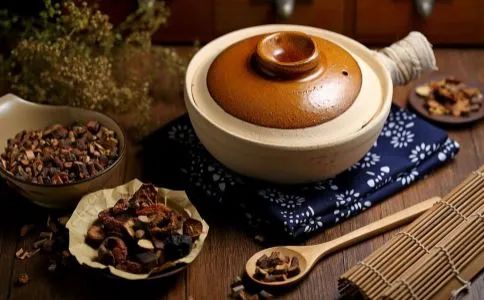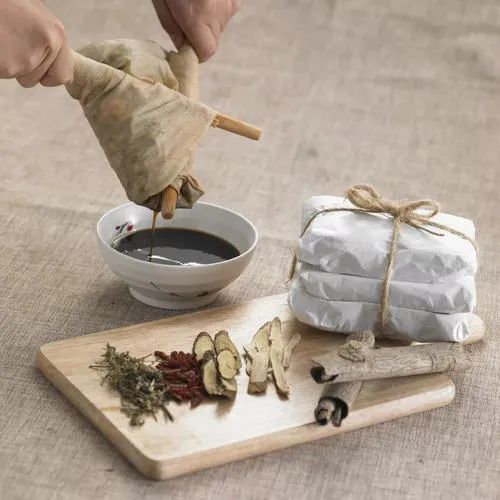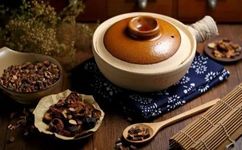Recently, many friends have messaged me, saying that they bought some formulas locally and are brewing them at home. They asked me for precautions and mentioned an important point: is it true that the longer you brew Chinese herbal medicine, the better? Is a thicker decoction better?
In fact, this has been a question for many people. Some believe that the thicker the decoction, the better the effect, thinking it can better utilize the properties of the ingredients. However, this is a significant misconception. A higher concentration of Chinese herbal decoction does not necessarily mean better efficacy.

Image source from the internet. If there is any infringement, please contact the author for removal.
The classic texts of Chinese medicine describe decoctions as “tang zhe, dang ye, qu da bing zhi yong”, meaning that decoctions are used to wash away major illnesses. Here, ‘dang’ refers to cleansing, indicating that it can wash away and eliminate, making it very suitable for conditions of yin-yang imbalance or prolonged illnesses.
Of course, in today’s highly developed medical field, decoctions can still shine in various areas. However, how to brew a good decoction has become a question for many.
As Xu Lingtai said in “Yixue Yuanli Lun”: “The method of brewing medicine should be deeply discussed; the efficacy of the medicine depends entirely on this.” Therefore, correctly brewing herbal medicine is crucial for eliminating diseases and fully utilizing the medicinal effects.
Currently, the Chinese medicine we often buy at hospitals is mostly in the form of herbal pieces, and brewing is the process of continuously releasing and dissolving the active ingredients from these pieces. When the concentration of the active ingredients in the decoction balances with that in the herbal pieces, this diffusion process stops.
If we continue to brew in pursuit of a “thicker and less” decoction, not only will the active ingredients not be released further, but non-active components (such as resins, gums, pigments, and other macromolecular compounds) may continue to dissolve, which can reduce the effective components in the decoction due to evaporation and even damage them under prolonged high temperatures, thus lowering the medicinal efficacy.

Image source from the internet. If there is any infringement, please contact the author for removal.
Moreover, prolonged brewing can easily lead to burning, and overly concentrated decoctions can intensify bitterness, making it difficult for patients to take the medicine, potentially causing nausea, vomiting, and other side effects.
So, after all this, how long should we brew for optimal results?
To ensure that Chinese medicine exerts its intended effects, it should be brewed for a certain time according to the nature of the herbs:
For exterior-releasing herbs, brew for 10-15 minutes after boiling, and a second brew for 10 minutes.
For tonifying herbs, brew for 30-40 minutes after boiling, and a second brew for 25-30 minutes.
For herbs of general nature, brew for 20-25 minutes after boiling, and a second brew for 15-20 minutes.
All types of decoctions should ideally be brewed twice. After brewing, the decoction should be filtered and squeezed while hot to minimize the residual amount of decoction in the herbal dregs.
If the formula contains volatile components, such as Bo He (Mentha), He Ye (Lotus Leaf), Su Ye (Perilla Leaf), Huo Xiang (Agastache), and Pei Lan (Eupatorium), it is important not to brew too thickly. During brewing, it is best to cover the pot to prevent the evaporation of effective substances. If it contains cooling herbs like Jin Yin Hua (Honeysuckle) and Ju Hua (Chrysanthemum) or aromatic herbs like Sha Ren (Amomum) and Chen Xiang (Agarwood), it should also not be brewed too thickly.

Image source from the internet. If there is any infringement, please contact the author for removal.
Some tonifying herbs require thick brewing, but the specific degree and amount should be determined by a TCM practitioner based on the condition. One should not arbitrarily increase the dosage or extend the brewing time.
Some Chinese herbs containing saponins, such as Sha Shen (Glehnia), Tian Qi (Notoginseng), Niu Xi (Achyranthes), Gan Cao (Licorice), and Jie Geng (Platycodon), will start to boil and show a “false boil” phenomenon before reaching 100°C. If the herbs are removed from the heat at this time, the effective components will not be fully dissolved, affecting the medicinal efficacy and failing to achieve the desired therapeutic effect. This should be noted during brewing.
Each time the brewed decoction should yield no less than 180 milliliters (about nine-tenths of a regular bowl); if it is brewed for children, due to the smaller dosage, the amount can be reduced to about 120 milliliters.
Previous Selections
Feeling sleepy? It might be your organs signaling a problem.Four things to do in the morning to check if your body has excessive dampness.Where does sweat come from, and where does illness arise? What do you know about sweating?If you are reading this, please give it a click before you leave.

